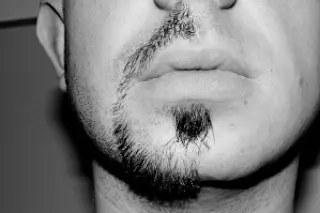Photo: flickr/Roberto VentreYour beard can run, but it can't hide from the power of the SparCLeS algorithm! This powerful computer program will identify and classify any style of facial hair (guaranteed to work only on beards and moustaches). Get one today!SparCLeS: Dynamic l1 Sparse Classifiers With Level Sets for Robust Beard/Moustache Detection and Segmentation. "Robust facial hair detection and segmentation is a highly valued soft biometric attribute for carrying out forensic facial analysis. In this paper, we propose a novel and fully automatic system, called SparCLeS, for beard/moustache detection and segmentation in challenging facial images. SparCLeS uses the multiscale self-quotient (MSQ) algorithm to preprocess facial images and deal with illumination variation. Histogram of oriented gradients (HOG) features are extracted from the preprocessed images and a dynamic sparse classifier is built using these features to classify a facial region as either containing skin or facial hair. A level set based approach, ...
Robust computational beard identification, FTW!
Discover the power of the SparCLeS algorithm for effective beard moustache detection and segmentation in facial analysis.
More on Discover
Stay Curious
SubscribeTo The Magazine
Save up to 40% off the cover price when you subscribe to Discover magazine.
Subscribe













